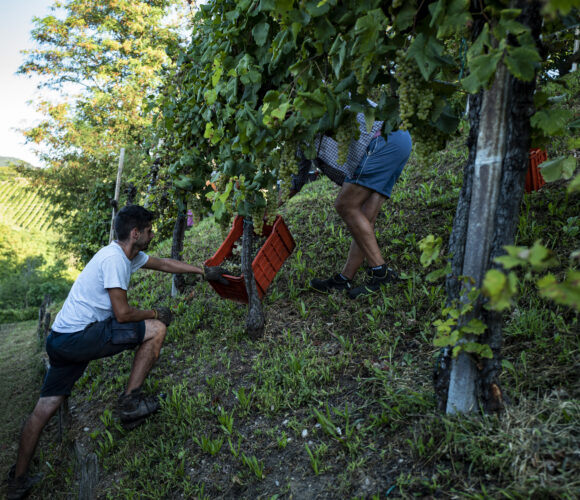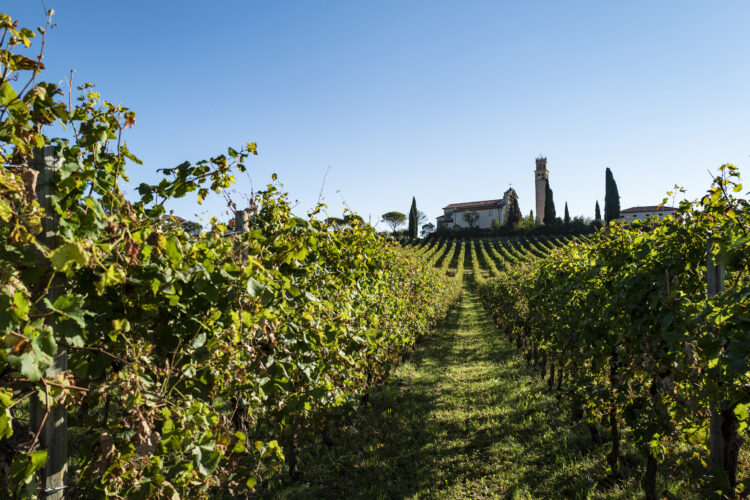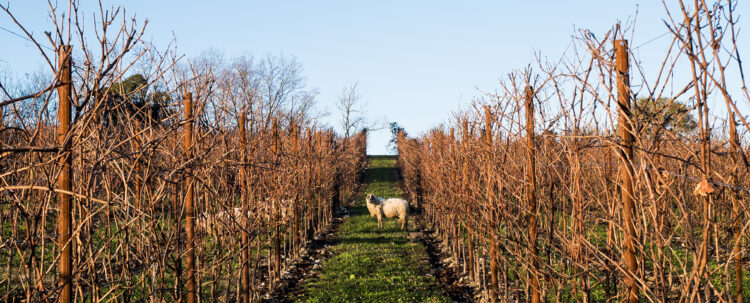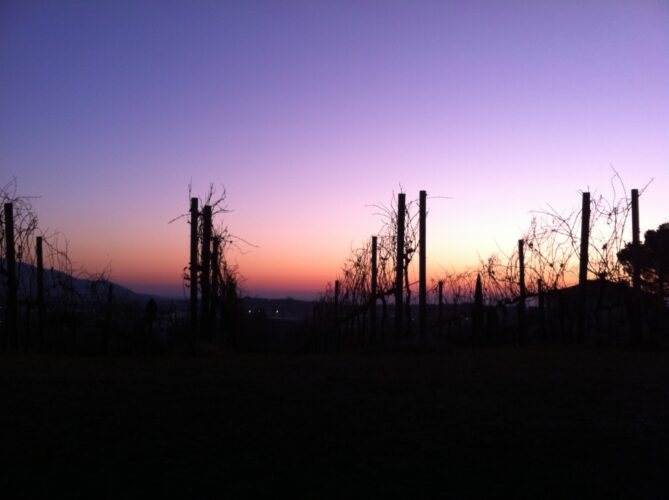For most people, prosecco suddenly began appearing everywhere about ten or fifteen years ago—and immediately became everyone’s favorite, everyday bubbly. However, wines called prosecco have been produced for more than a century in this region near Venice, Italy.

The Cosmo family, wine producers in the prosecco region, founded Bellenda winery about 40 years ago. They take their cues from tradition as well as present trends. Umberto Cosmo, part of the current generation of the family, explained this over zoom a couple weeks ago. In four bottles of Bellenda sparkling wine, you can experience the history of prosecco—and a hint of the future.
These four bottles include: a natural-style sparkling, a traditional extra dry, a prestigious prosecco superiore; and a sparkling wine made with the same production method used for champagne (called metodo classico in Italian). All of these sparkling wines are made (mainly) with the glera grape, native to the Prosecco region, which is required in proseccos.
- The historically natural Con Alti, Colli Trevigisani IGT, Bianco, Vino Frizzante.
This is a natural-style wine made the way people did over 100 years ago. It’s not what you’d expect, if you just ordered “a glass of prosecco” at your local bar. Rather, it’s feistier and yeastier and less bubbly. Umberto Cosmo says this wine is produced “in the style of the past, with modern knowledge.”
Con Alti uses grapes from vineyards grown with a variety of trellis types, depending on when they were planted. Some of the vines are even supported by trees. Half the grapes in Con Alti wine are glera, which is the major grape in today’s proseccos; the rest consists of a variety of indigenous white grapes. They’re pressed and briefly macerated before the juice is put into bottles and sealed with crown caps. No added sugar or sulfites, and only a little over 10% alcohol.
Traditionally, this style of wine would be left in the bottle in a cool place over the winter, to be consumed in April of the year following the harvest. Nowadays, the winery has more careful control over their production temperatures, and the wherewithal to age the wine longer in the bottle.
In the 2023 vintage I sampled, the wine fermented dry on its own. It’s lightly sparkling, and the aromas are fresh, earthy and flinty. On the palate, it’s dry and minerally with a streak of citric acidity persisting through the long finish.
Technically, this cannot be labeled as prosecco because it is made with different ratio of glera grapes, and in a different production style. This style is also known as col fondo, which is very popular now. Try it because you’ll enjoy the energy, and you’ll get a taste of what people drank a century or more ago.

- Traditional style, familiar and delightful: Fratelli Cosmo Prosecco DOC
With its sweet and friendly label design, it’s no surprise this extra dry prosecco is fun and fruity. Apricot and peach come to mind if you’re counting fruits. If not, simply sip it as an aperitif, or with a light first course during your meal.
This is what prosecco was meant to be: a light-hearted aperitif to welcome friends and introduce the dinner hour. At only 11.5% alcohol, this sparkler is lower in alcohol than most table wines.
A hint of the future: Umberto Cosmo tells us that next year, this wine will be produced with only 2% alcohol.
- Current Top of the Line: San Fermo Valdobbiadene DOCG Prosecco Superiore Brut
The Bellenda winery is located in one of the prestigious DOCG areas of the Prosecco region called Valdobbiadene, a hilly area west of Venice. Umberto Cosmo relates they named this prosecco wine after a church in the nearby countryside.
Traditionally, prosecco was made in an off-dry style, but refinements in viticulture and production have now enabled producers to make a brut style. This is the most fashionable style of sparkling wine today, in any region.
At Bellenda, they make this wine from grapes grown in a vineyard that is so steep they use sheep to “mow” the grasses in between the rows of vines. The vineyards are managed the way Cosmo’s grandfather did, without chemicals.

Umberto Cosmo advises using a white wine glass to enjoy this wine, instead of a flute, and serve it well-chilled, around 45 F. The wine is fresh and pleasant, morphing as it warms in the glass to include honeyed aromas and touch of orange peel in the rounded flavors. It is a good aperitif wine, and also pairs well with northern-Italian style first courses including risotto, vegetable and fish dishes.
- Sei Uno Valdobbiadene Prosecco Superiore, Extra Brut, Rive de Carpesica, Metodo Classico.
The term “classic method” [metodo classico] refers to the production style used in Champagne. The wine is double fermented in the bottle, then disgorged and topped up with the same wine. After that it is given another four to six months to settle before being released for sale. This is a very dry wine, mild on its release, expected to grow in complexity in the bottle, for four to six years.
NOTE: In the Prosecco region, winemakers have been working for decades to produce a metodo classico wine with glera grapes. They are driven by the challenge, and by the market, expecting great demand from consumers for a sparkling wine made in the same production method as in Champagne. However, I’m not convinced most consumers know enough about production methods for this to make a difference. Also, I’m not convinced this is the best way to show the glera grape. Rose prosecco is one of the great successes of recent years. Rose is popular, with sparkling rose wines growing in demand. In its traditional, region style of production (charmat) the glera grape makes a flavorful, colorful and lightly fruity sparkler with the addition of a small percentage of pinot noir.


